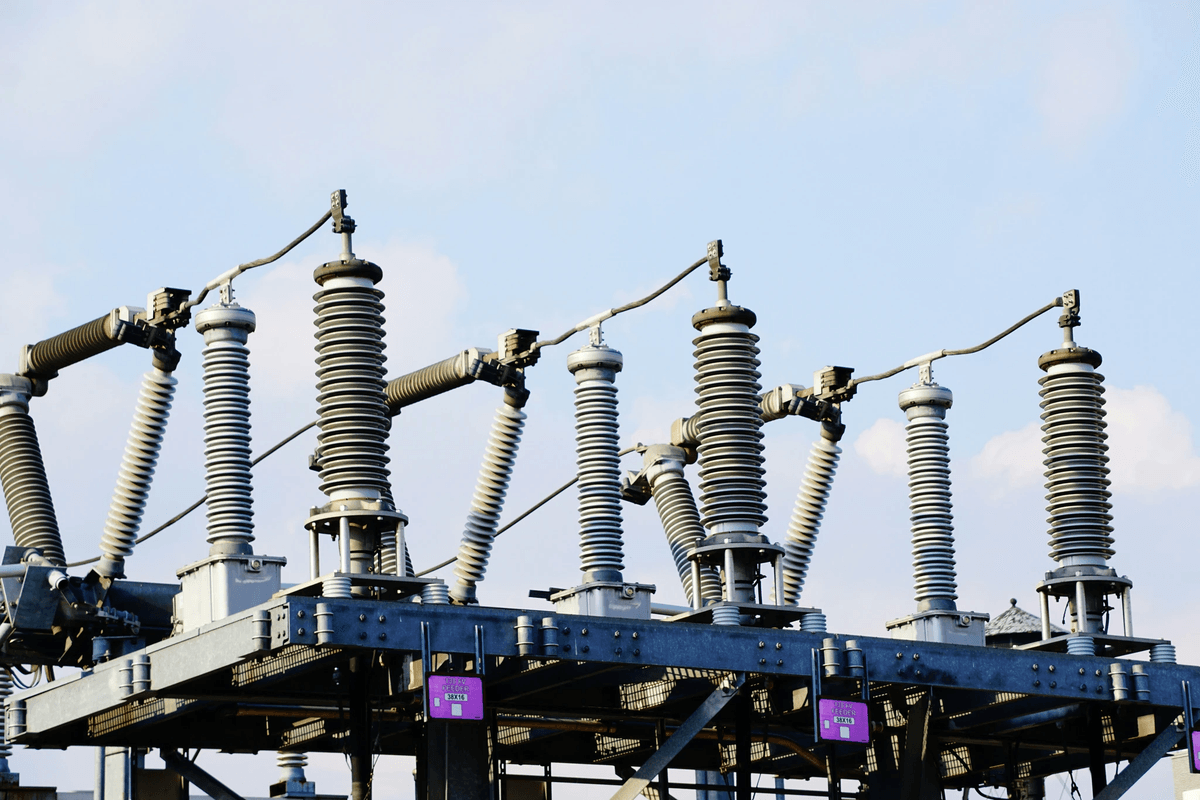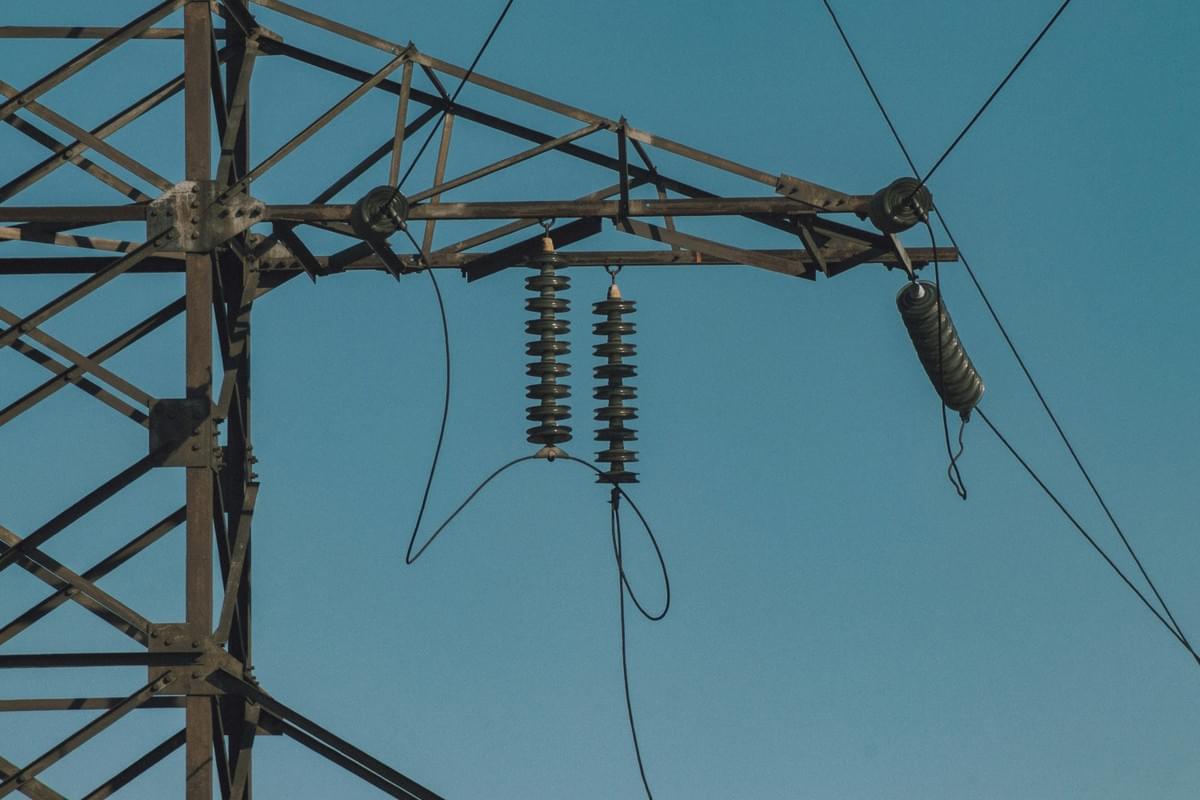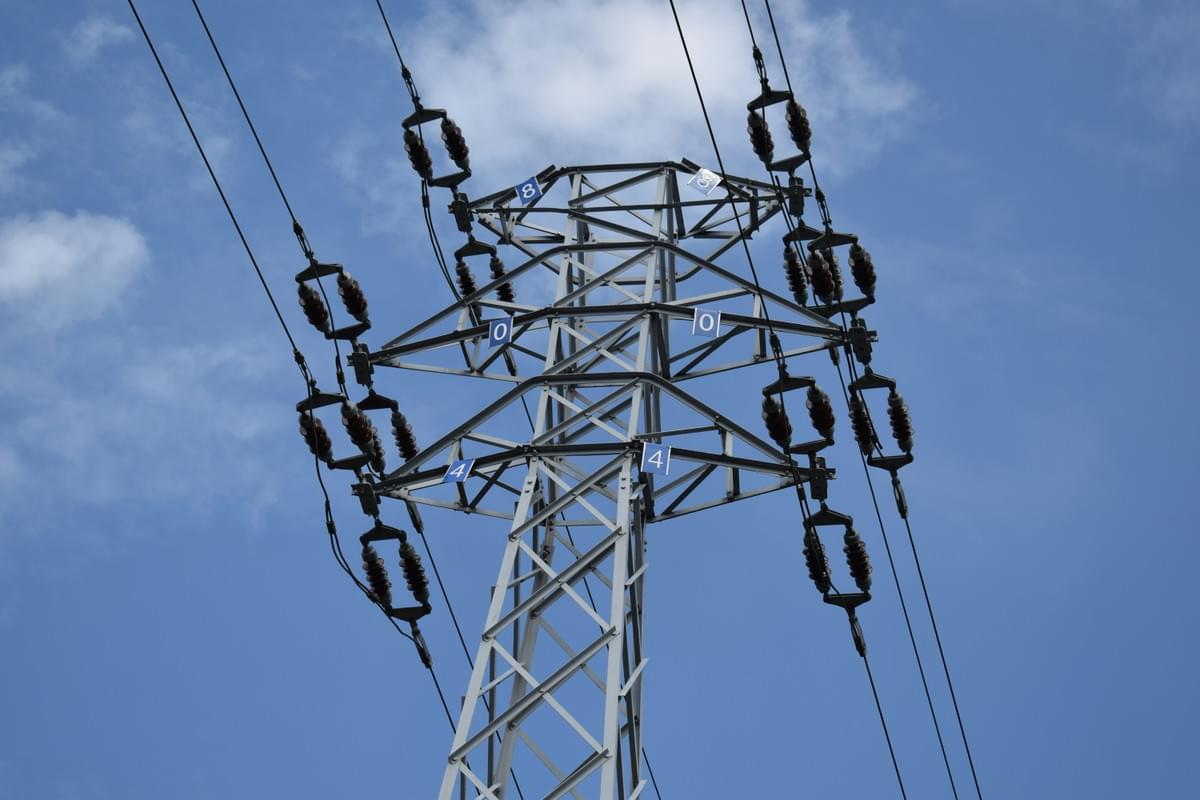Introduction
In the intricate world of electrical engineering, the cross arm in transmission line structures plays a pivotal role in ensuring reliable power distribution. These horizontal beams are essential for supporting overhead wires and maintaining their stability across varying terrains and weather conditions. Understanding what a cross arm is, its purpose, and its specifications is crucial for anyone involved in utility infrastructure.
Understanding Electrical Cross Arms
Electrical cross arms are structural components mounted on utility poles that hold and stabilize the conductors of overhead power lines. They serve as vital supports that help distribute loads evenly, thereby enhancing the overall integrity of transmission systems. But what exactly is the purpose of a cross arm? Essentially, it prevents sagging or swaying of wires while accommodating various electrical configurations.
Importance in Transmission and Overhead Lines
The significance of cross arms cannot be overstated; they are fundamental to maintaining safety and efficiency in transmission lines. By providing structural support, these components help mitigate risks associated with environmental factors such as high winds or ice accumulation. Moreover, they facilitate better load distribution across multiple conductors, which is vital for preventing failures that could lead to outages.
Overview of Types and Specifications
When it comes to types of cross arms in transmission lines, options range from wooden to steel and composite materials—each with its own set of advantages and applications. Specifications such as material standards, load ratings, dimensions, and installation requirements must be meticulously adhered to ensure compliance with regulatory standards. Understanding these types and specifications will empower engineers to make informed decisions tailored to specific project needs.
What is the Purpose of a Cross Arm?

When you think about the intricate web of wires crisscrossing our landscapes, it’s easy to overlook the unsung hero holding everything together: the cross arm in transmission line systems. These essential components serve multiple purposes, ensuring that electrical infrastructure remains stable and efficient. Understanding what is the purpose of a cross arm can shed light on their critical role in maintaining power delivery.
Structural Role in Transmission Lines
The primary function of a cross arm in transmission lines is to provide structural support for overhead conductors. By acting as a horizontal beam, it helps to secure wires at specific heights and distances apart, preventing sagging or excessive tension that could lead to failure. This structural integrity is vital for ensuring that lines remain operational under various weather conditions, such as high winds or ice accumulation.
Enhancing Stability and Load Distribution
In addition to providing support, cross arms play a crucial role in enhancing stability and load distribution across transmission structures. They help distribute the weight of conductors evenly among poles or towers, reducing stress on any single point within the system. This balanced load distribution not only prolongs the life of utility infrastructure but also minimizes maintenance needs—a win-win for energy providers and consumers alike.
Safety Considerations in Design
Safety is paramount when designing any component within an electrical system, and cross arms are no exception. Engineers must consider factors such as wind loads, ice loading, and potential impacts from falling trees when determining specifications for these structures. By incorporating safety features into cross arm design—such as reinforced materials or innovative mounting techniques—utility companies can mitigate risks associated with power outages and ensure reliable service delivery.
What is the Difference Between Cross Arm and Alley Arm?

When navigating the world of utility infrastructure, understanding the distinctions between a cross arm in transmission line systems and an alley arm is crucial. Both components serve significant roles, yet they are tailored for different applications within electrical transmission frameworks. By dissecting their definitions, functions, and use cases, we can appreciate how each contributes to a reliable power supply.
Definition and Functions
A cross arm in transmission line setups is a horizontal support structure mounted on poles that holds conductors or wires in place. Its primary function is to enhance stability by distributing loads evenly across the pole structure while maintaining proper spacing between conductors. On the other hand, an alley arm typically refers to a more specialized type of support that extends from utility poles into narrower spaces, often used for street lighting or secondary distribution lines.
While both arms are integral to electrical systems, their designs cater to specific needs: cross arms focus on load-bearing capabilities in high-voltage scenarios, whereas alley arms prioritize accessibility and space efficiency. Understanding these definitions helps clarify what is the purpose of a cross arm? It’s about providing robust support where it’s most needed.
Applications in Utility Infrastructure
The applications of cross arms in transmission lines are widespread; they are essential for ensuring that high-voltage wires remain securely positioned during adverse weather conditions or heavy load situations. This reliability makes them indispensable for long-distance power transmission networks where stability is paramount. Conversely, alley arms find their niche primarily in urban settings where space constraints demand innovative solutions for supporting overhead wiring without obstructing pedestrian pathways or vehicular traffic.
In essence, while both types of arms play vital roles within utility infrastructure, they cater to different environments and operational requirements. Cross arms are often found on major transmission towers where strength and durability are critical; meanwhile, alley arms shine in residential areas or city streets where compactness matters most.
Visual Distinctions and Use Cases
Visually distinguishing between a cross arm and an alley arm can be quite straightforward once you know what to look for: cross arms tend to be broader and more robustly built compared to their sleeker counterparts—alley arms—which often extend at an angle from poles into tighter spaces with less bulkiness. The design differences reflect their intended uses; while cross arms need to handle heavier loads over greater spans, alley arms must maneuver around obstacles like trees or buildings without compromising safety.
Use cases further illustrate these distinctions: a typical scenario might involve multiple cross arms supporting high-tension wires on tall pylons spanning open fields versus alley arms facilitating lower voltage lines that illuminate city streets without creating hazards for pedestrians. These visual cues not only help identify each component but also highlight how they work together within the larger framework of electrical distribution systems.
Types of Cross Arms in Transmission Line

When discussing the types of cross arms in transmission lines, it’s essential to recognize how each type contributes uniquely to the overall infrastructure. The choice of cross arm material can significantly affect durability, cost, and performance under various environmental conditions. Whether it's wooden, steel, or composite, understanding these options helps in making informed decisions for utility projects.
Wooden Cross Arms: Durability and Cost-Effectiveness
Wooden cross arms have long been a staple in the world of electrical transmission lines due to their natural durability and cost-effectiveness. Typically made from treated timber, these cross arms are both lightweight and strong enough to support various loads while resisting decay. However, they do require periodic maintenance and replacement over time, which can impact long-term costs despite their initial affordability.
Moreover, wooden cross arms play a vital role in stabilizing overhead lines by distributing weight evenly across the structure. This aspect answers the question: what is the purpose of a cross arm? It ensures that tension is maintained across wires during high winds or adverse weather conditions. While they may not be as robust as other materials like steel or composites, their proven track record makes them a popular choice for many utility companies.
Steel Cross Arms: Strength and Resistance
Steel cross arms represent a significant upgrade in terms of strength and resistance compared to their wooden counterparts. Known for their ability to withstand extreme weather conditions without warping or breaking, steel cross arms provide enhanced stability for overhead transmission lines. This increased durability often results in lower maintenance costs over time—an attractive proposition for utility providers looking to maximize efficiency.
One notable advantage is that steel can be designed with specific load ratings tailored to meet project requirements—addressing another aspect of cross arm specifications. But what about safety? Steel's inherent strength reduces risks associated with line sagging or failure during storms or heavy loads; thus enhancing overall safety measures within electrical infrastructure.
Composite Cross Arms: The Future of Transmission
As technology advances, composite materials are emerging as the future of transmission line infrastructure through innovative designs and enhanced performance capabilities. Composite cross arms combine materials like fiberglass reinforced polymer (FRP), offering exceptional strength while being significantly lighter than traditional materials such as wood or steel. This lightweight nature allows for easier installation while maintaining structural integrity under varying loads.
Additionally, composite materials are resistant to corrosion and environmental degradation—making them an ideal choice for areas prone to severe weather conditions or salt exposure near coastal regions. As we explore what is the difference between cross arm and alley arm later on, it’s worth noting that composites bridge gaps between traditional options by providing versatility across diverse applications within utility infrastructure.
In summary, each type of cross arm in transmission line applications presents its advantages based on specific needs—whether it’s cost-effectiveness with wood or advanced resilience with steel and composites. Understanding these distinctions not only aids utilities in selecting appropriate options but also ensures safer operational standards across electrical networks.
Cross Arm Specifications

When discussing cross arms in transmission lines, specifications play a pivotal role in ensuring their effectiveness and safety. Understanding the material standards, dimensions, installation requirements, and regulatory compliance is essential for utility companies and engineers alike. These specifications not only dictate the performance of cross arms but also contribute to the overall integrity of overhead power systems.
Material Standards and Load Ratings
The material standards for cross arms in transmission lines are critical to their performance under various environmental conditions. Typically constructed from wood, steel, or composite materials, each type has distinct load ratings that determine its suitability for specific applications. For instance, wooden cross arms offer cost-effectiveness but have lower load ratings compared to steel options; thus, understanding these differences answers the question: What is the purpose of a cross arm? It’s all about balancing strength with budget constraints while ensuring safety.
Load ratings are essential because they indicate how much weight a cross arm can support without compromising structural integrity. Utility companies must select materials that can withstand not only the weight of wires but also environmental factors like wind and ice loads. By adhering to established material standards, engineers can confidently design transmission lines that meet operational demands while minimizing risks.
Dimensions and Installation Requirements
Dimensions of cross arms in transmission lines vary based on their intended use and load capacity; therefore, precise measurements are crucial during both design and installation phases. Standard lengths typically range from 6 to 12 feet, with widths varying depending on the pole structure they complement. Understanding these dimensions helps clarify what is the difference between cross arm and alley arm; alley arms usually have different geometries suited for specific applications.
Installation requirements also play a significant role in determining how effectively a cross arm functions within a transmission system. Proper alignment with poles and accurate spacing between wires ensures optimal load distribution across all components involved. This meticulous attention to detail minimizes potential hazards while enhancing stability—further emphasizing why it’s vital to understand types of cross arms in transmission line applications.
Compliance with Regulatory Standards
Compliance with regulatory standards is non-negotiable when it comes to installing cross arms in transmission lines; adherence ensures safety and reliability across power distribution networks. Various organizations set forth guidelines dictating acceptable materials, construction practices, and testing protocols that must be followed during installation processes. These regulations help protect both utility workers who maintain these systems as well as communities relying on consistent electricity supply.
In many regions, inspections are mandatory post-installation to verify that all components meet established criteria before being put into service—this includes everything from checking load ratings to verifying dimensional accuracy against specifications outlined by governing bodies. Failure to comply can lead not only to fines but also dangerous situations where infrastructure fails under stress due to inadequate support structures like improperly designed or installed cross arms.
Ultimately, understanding these specifications equips professionals with knowledge necessary for making informed decisions about types of cross arms in transmission line projects—ensuring efficiency while prioritizing safety above all else.
Spark Fittings: Innovators in Cross Arm Solutions

When it comes to revolutionizing the cross arm in transmission line technology, Spark Fittings stands at the forefront. Their innovative products are designed not only to meet but exceed the demands of modern utility infrastructure. By focusing on durability, safety, and efficiency, Spark Fittings has carved a niche that emphasizes the importance of quality in every cross arm they produce.
Overview of Spark Fittings’ Products
Spark Fittings offers a diverse range of products specifically tailored for cross arms in transmission lines. From traditional wooden and steel options to advanced composite materials, their selection caters to various utility needs. Each product is engineered with precision to ensure maximum load distribution and stability—essential factors when considering what is the purpose of a cross arm?
Their unique designs also take into account compliance with stringent regulatory standards, ensuring that each cross arm meets necessary specifications for safety and performance. With an emphasis on innovation, Spark Fittings continuously updates its offerings based on emerging technologies and customer feedback. Whether it's enhancing existing infrastructure or developing new solutions, their commitment to quality shines through every product.
Enhancements in Transmission Infrastructure
The enhancements brought by Spark Fittings have significantly impacted transmission infrastructure across various regions. By integrating cutting-edge materials and designs into their cross arms, they have improved overall system reliability while reducing maintenance costs—an essential factor when discussing types of cross arms in transmission lines. Their products not only withstand harsh environmental conditions but also provide increased longevity compared to traditional options.
Moreover, these advancements contribute directly to safety considerations during installation and operation, addressing common concerns about what is the difference between cross arm and alley arm? The versatility offered by their solutions allows utilities to better adapt to specific geographic or operational challenges while maintaining high standards for performance.
Case Studies of Successful Implementations
Several case studies highlight how Spark Fittings has transformed utility projects through innovative applications of their products. One notable example involved a major utility company that upgraded its aging transmission lines using Spark's composite cross arms; this resulted in enhanced load-bearing capacity without compromising structural integrity—a clear demonstration of why understanding cross arm specifications is crucial.
Another case study showcased a rural electrification project where wooden cross arms were replaced with steel options from Spark Fittings due to their superior strength and resistance properties. The project's success not only improved service reliability but also provided valuable insights into what is the purpose of a cross arm? Through these examples, it's evident that investing in modern solutions can yield significant benefits for both utilities and consumers alike.
Conclusion
In wrapping up our discussion on the cross arm in transmission lines, it's clear that these structural components play a pivotal role in ensuring the stability and safety of overhead power systems. Understanding the purpose of a cross arm goes beyond mere aesthetics; it’s about enhancing load distribution and maintaining safety standards. Furthermore, distinguishing between types of cross arms, such as wooden, steel, and composite options, reveals how material choice impacts durability and cost-effectiveness.
Key Takeaways on Cross Arms
The importance of cross arms in transmission lines cannot be overstated; they are essential for supporting conductors and improving overall stability. We’ve learned that the primary purpose of a cross arm is to distribute loads evenly across structures while also providing safety features that protect against environmental factors. Additionally, recognizing the difference between a cross arm and an alley arm highlights their unique roles within utility infrastructure—each tailored for specific applications.
Future Trends in Transmission Line Technology
As we look ahead to future trends in transmission line technology, innovations like smart grid integration and advanced materials are shaping the landscape. The evolution of types of cross arms is likely to include more sustainable options that utilize eco-friendly materials without compromising strength or efficiency. Moreover, ongoing advancements will focus on enhancing compliance with regulatory standards while ensuring that specifications meet the challenges posed by increasing energy demands.
Final Thoughts on Safety and Efficiency
Ultimately, prioritizing safety and efficiency when selecting a cross arm in transmission line applications is paramount for utility providers. By understanding what is the purpose of a cross arm as well as its specifications, stakeholders can make informed decisions that bolster infrastructure resilience. In this ever-evolving field, staying abreast of developments ensures not only operational effectiveness but also contributes to safer energy transmission for all.

